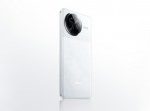MediaNews Group/Reading Eagle via Getty Images / Contributor
- Spanish firm Genaq extracts water through the air with atmospheric generators.
- The firm can make up to 1.5 million liters a day in water-bottling plants and works in 45 countries.
- Its water is used in emergencies, natural disasters, droughts, and refugee camps.
- See more stories on Insider’s business page.
Though extracting water from the air might sound like magic, science and technology have made it possible for companies to rely on air humidity to supply millions with water.
One such company is Spanish firm Genaq. Since 2008, the company has been investing in researching, development, and industrialization of atmospheric water generators produced in Lucena.
Commercial director Inmaculada Armenteros spoke to Insider about this project, which is already generating 1.5 million liters of water a day in water-bottling plant projects in 45 countries.
“In the air we breathe there is a certain degree of humidity which is actually water. What we do is condense it through a refrigeration circuit,” explains Armenteros. “The result is water with a very high level of purity and excellent quality. We filter it and remineralize it to make it suitable for human consumption.”
From there, teams can dispense the water they just produced on-site for all sorts of situations – from emergencies and dwindling water supplies to a total water shortage.
GENAQ
“The first need to cover before accommodation and food is water,” says Armenteros.
Through constantly developing their knowledge and tech, they’ve managed to maximize efficiency and to completely reduce their energy costs, so much so that producing a liter of water is much cheaper than the standard market price, even though their water is similar in quality to that of mineral water.
Its fourth generation of atmospheric generators features ultraviolet light, which can kill any type of pathogen.
The entire process is carried out through an energy source that can come from the electrical network, generator set, or solar or wind energy.
In the latter two instances, the generators are completely autonomous, sustainable, and can be located anywhere.
“In many cases, the water we’re producing is no longer an extra or alternative water supply; it’s the main source of water,” says Inmaculada Armenteros. “It’s about quality, safety, wholesomeness, and offering a self-contained solution.”
From 50 to 50,000 liters per day
Under nominal conditions (between 30% and 80% humidity) the company’s generators, depending on the model, can produce from 50 to 5,000 liters per day.
The performance of the generator can be accurately tracked anywhere in the world.
“We monitor the operation of all the generators we have in the market and can invest remotely at any notice,” says Armenteros. This is made possible by incorporating the Internet of Things, allowing the generators to be permanently connected and controlled from anywhere by mobile.
“We can turn on, turn off, change parameters and speed and above all, solve any incident remotely, solving any operational problem.”
GENAQ
Each range is geared to a specific need: the smallest “Stratus” generators are similar to water fountains, designed to serve homes, hotels, hospitals, offices, or restaurants.
Intermediate generators like the Nimbus are targeted at the industrial sector in more remote locations, like oil rigs, mining camps, or construction sites.
The Cumulus is mainly intended for emergencies in military and civilian camps or natural disasters.
“They [Cumulus generators] can be transported by helicopter and can handle really inhospitable situations,” says Armenteros.
The largest range, the AWGPlant is designed to supply bottling plants, residential water supplies, or industrial processes.
And Genaq is currently developing the prototype of what will be the future Stratus S20, which will generate up to a maximum of 20 liters per day, specially designed as a domestic water dispenser – it could replace bottled water in homes, cutting down carbon footprints and plastic use.
“We’re also looking at future applications like hydroponic and precision agriculture,” says Armenteros.
Oil companies, technology centers, and even armies use their technology
45 countries on five continents are currently using Genaq’s technology – Australia, Malaysia, Madagascar, Qatar, Ethiopia, Nigeria, Algeria, France, Spain, Portugal, Puerto Rico, Chile, Panama, Honduras, Mexico, and the United States to name but a few.
The United Nations, armies, and governments like the United States, Panama, Spain, Pakistan, and Malaysia are also taking advantage of their generators, while oil companies such as ENSCO, Petronas, and Sapura and tech centers in Jordan, Chile, and Qatar are involved with their projects, too.
The simplicity of its installation is one of the things that draws in so much attention.
“It doesn’t require civil works or installation of any kind – you just arrive and connect it,” says Armenteros.
They see the bottled water industry as a partner to collaborate with and with which to join forces, rather than a competitor.
“They know the market and the consumer. We want to build relationships and agreements with these types of companies,” says Armenteros. “We are the next step in the service they provide.”
Powered by WPeMatico






